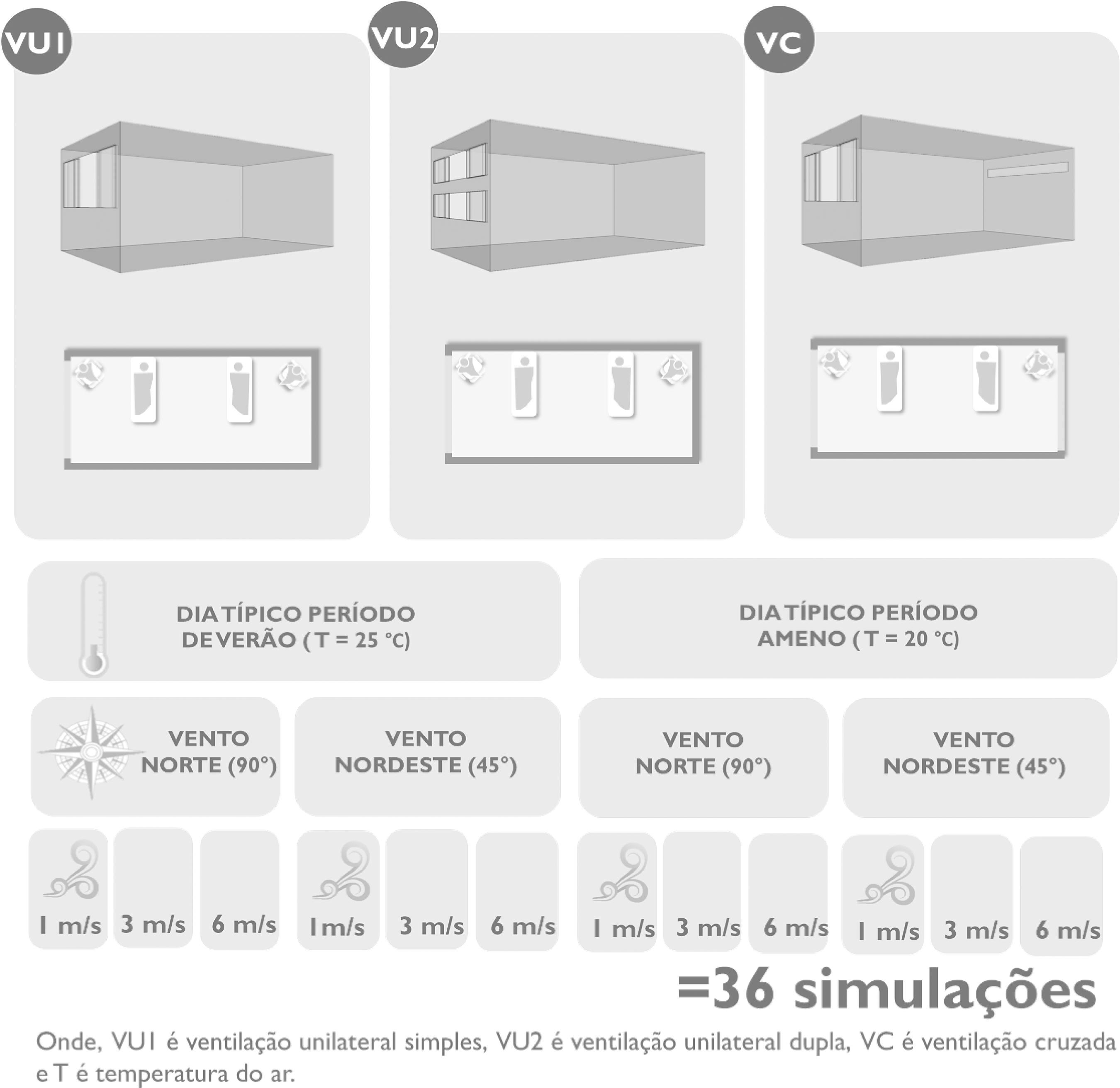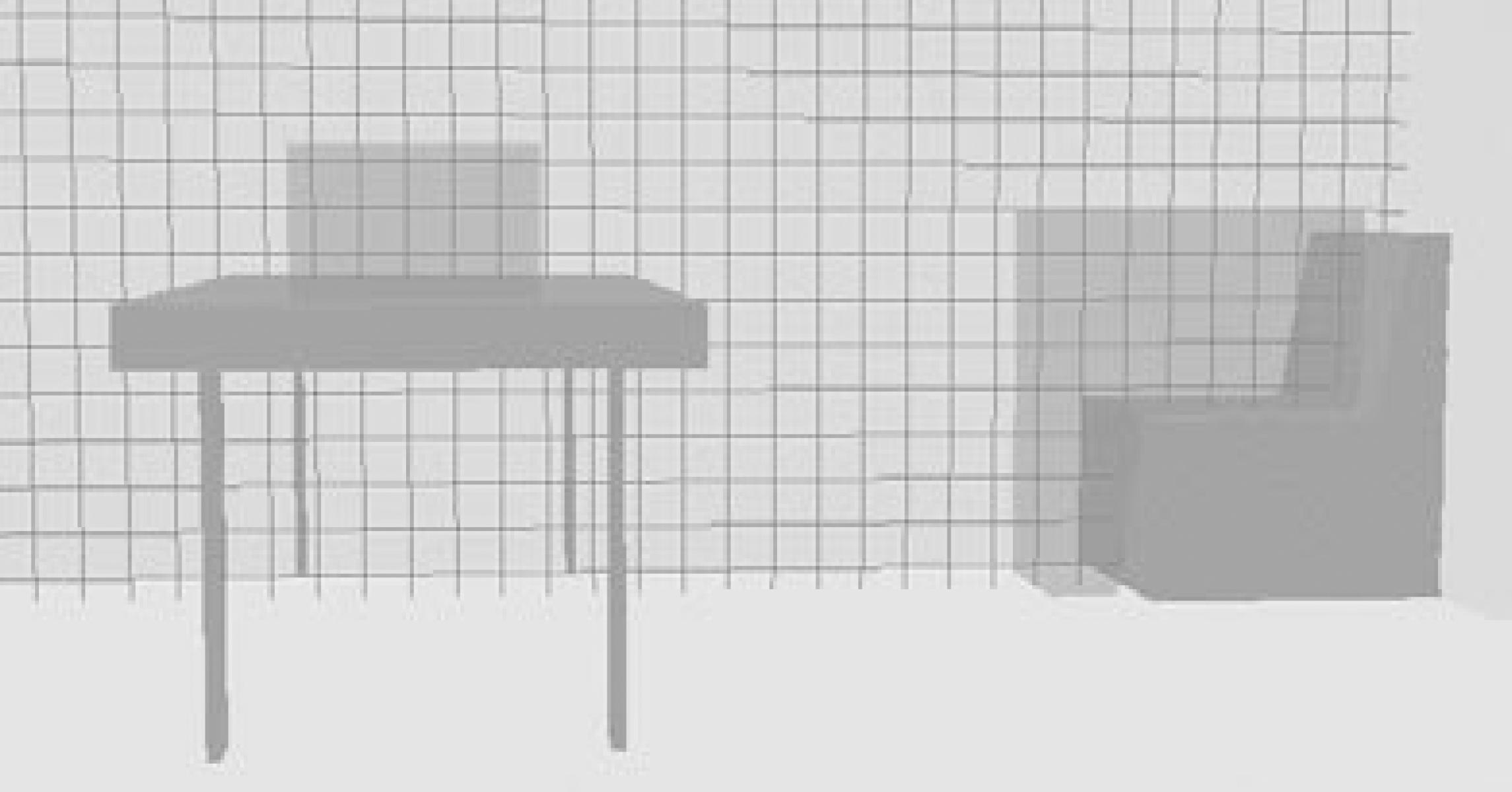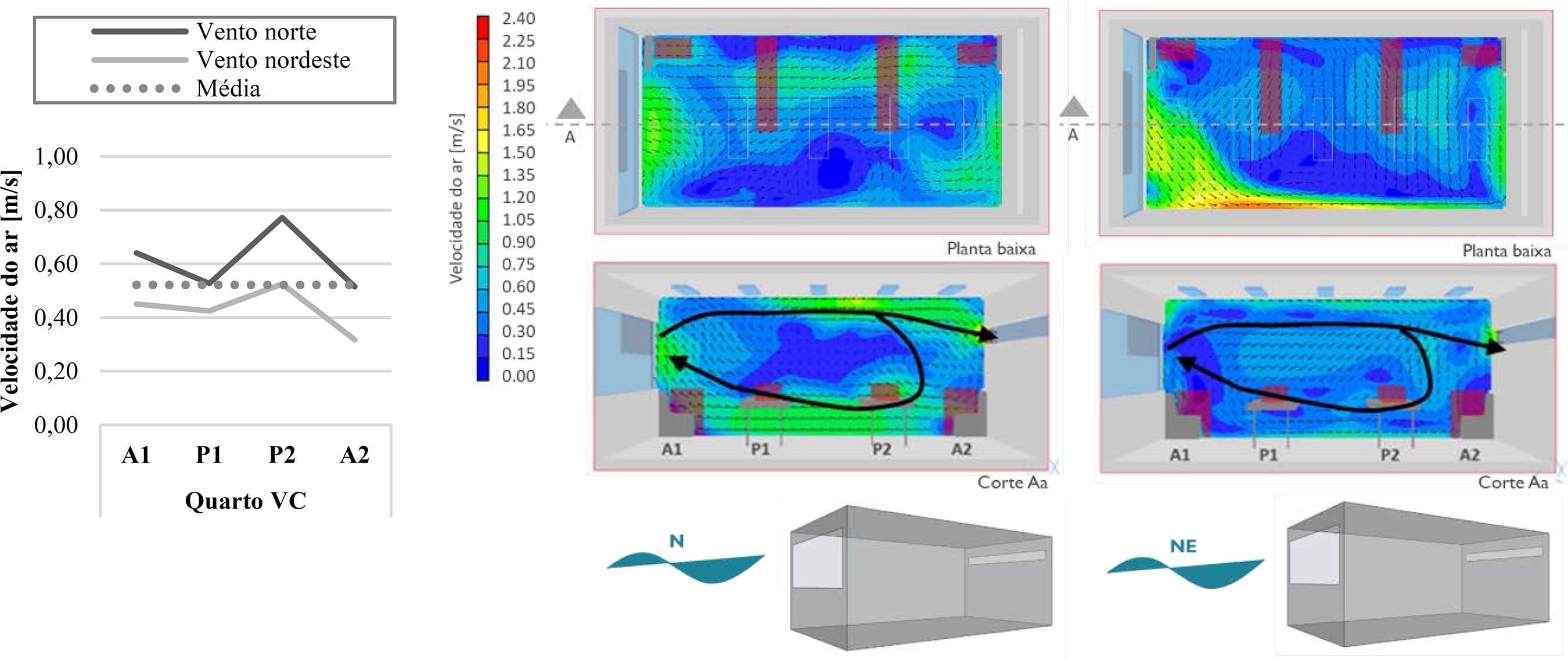Abstract
Natural ventilation can be an interesting passive cooling strategy for hospital rooms with a low infection risk, especially in a hot and humid climate like in the city of Florianópolis in south Brazil. Although there is enough evidence to prove the positive influence of natural ventilation on patients’ healing, the Brazilian standard RDC50, on technical practices for hospital building projects, strongly recommends the use of HVAC systems for these rooms. Thus, the main purpose of this study is to evaluate thermal comfort in patient rooms using different configurations of natural ventilation. The methodology is based on CFD simulation for three configurations of natural ventilation in a basic patient room: single-sided ventilation, double single-sided ventilation and cross-ventilation. The thermal performance of each natural ventilation configuration is analysed for a typical summer day and a typical spring day, with wind coming from the north and northeast directions at three different speed levels: 1.0 m/s, 3.0 m/s and 6.0 m/s. The results show an overall higher ventilation performance for the double single-sided ventilation and for cross-ventilation. The trend to verticalise and densify hospital buildings makes it difficult to adopt cross-ventilation. Therefore, the conclusion of the study is that double single-sided ventilation should be considered as an effective alternative to achieve thermal comfort in patient rooms.
Keywords:
Hospital architecture; Natural ventilation; Thermal comfort; CFD simulation










 Fonte: adaptada de
Fonte: adaptada de 




